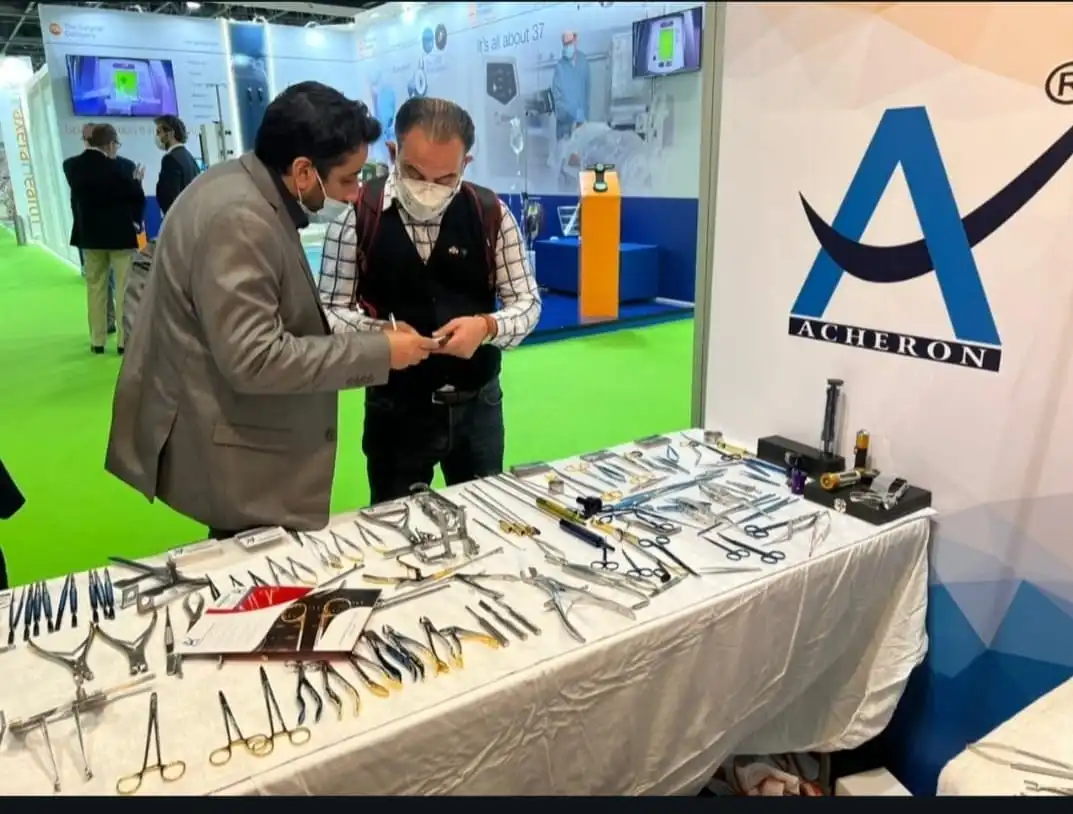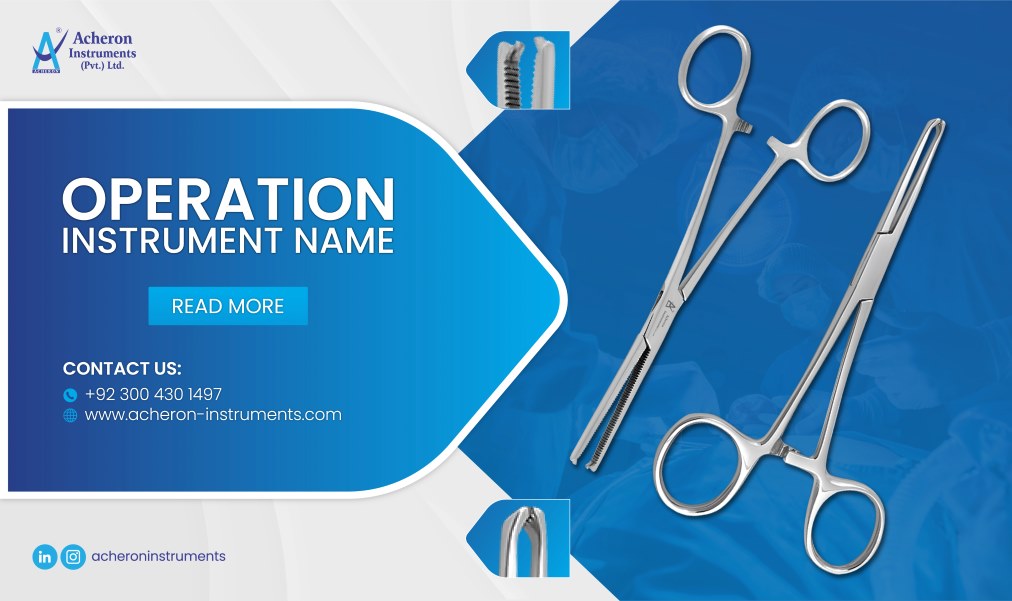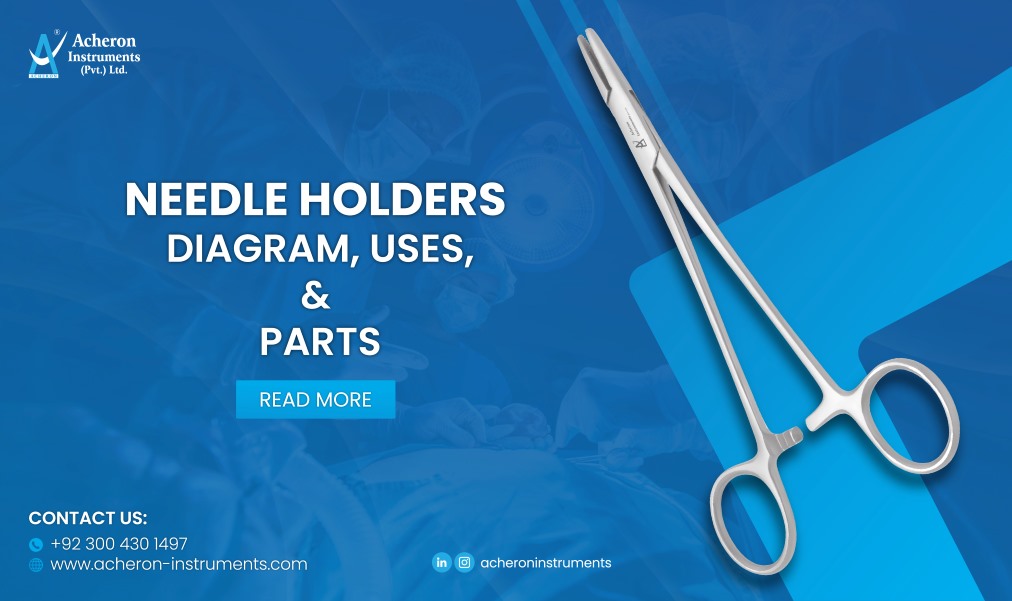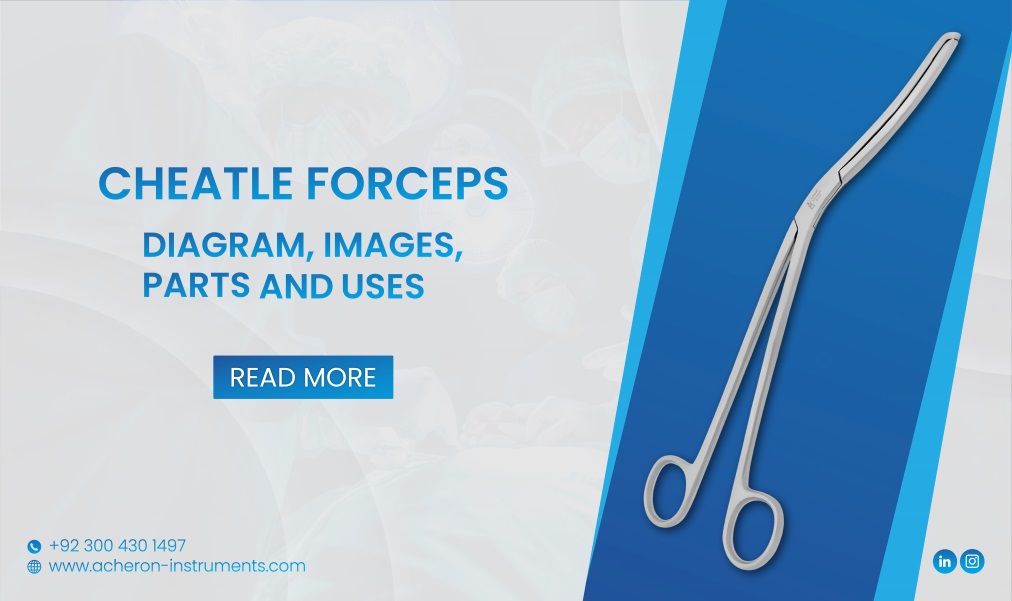.png)
In the world of surgery, precision is everything. Surgeons rely on their instruments to make accurate incisions and ensure successful outcomes. Two popular tools that surgeons use during procedures are Metzenbaum and Mayo scissors. These scissors play a crucial role in cutting and dissecting tissues, but what sets them apart?
In this article, we will unveil the battle of precision between Metzenbaum and Mayo scissors. Both scissors have their unique design and functionality, making them suitable for different surgical procedures. Metzenbaum scissors are renowned for their delicate and thin blades, enabling surgeons to perform precise dissections in fine tissues. On the other hand, Mayo scissors have a robust build and thicker blades, making them ideal for cutting through dense tissues or sutures.
We will explore the features, benefits, and best use cases for each scissor, helping surgeons understand which one to choose for specific surgical procedures. Whether you're a surgeon seeking to upgrade your tools or a medical enthusiast curious about surgical instruments, this article will provide valuable insights into the battle of precision in surgical tools.
The history and development of Metzenbaum scissors
Metzenbaum scissors were invented by William T. Metzenbaum, a prominent American surgeon, in the early 1900s. He recognized the need for a delicate tool that could be used in fine tissue dissections without causing excessive trauma. Metzenbaum scissors feature long, slender blades with a curved design, allowing surgeons to navigate through delicate tissues with ease. The blades are typically made of high-quality stainless steel, ensuring durability and resistance to corrosion.
One of the key advantages of Metzenbaum scissors is their ability to provide precise control during dissections. The thin and sharp blades allow surgeons to make clean and accurate cuts, minimizing tissue damage and reducing the risk of complications. Due to their delicate nature, Metzenbaum scissors are commonly used in procedures such as plastic surgery, neurosurgery, and ophthalmic surgery, where precision is paramount.
Despite their delicate design, Metzenbaum scissors are not limited to fine tissue dissections only. They can also be used for blunt dissection and tissue manipulation, thanks to their curved blades. The curved shape allows surgeons to access hard-to-reach areas and create tunnels for the passage of sutures or other surgical instruments. This versatility makes Metzenbaum scissors a valuable tool in various surgical procedures.
In summary, Metzenbaum scissors have a rich history and have proven to be a reliable tool for surgeons requiring precision and control during delicate tissue dissections. Their slender blades and curved design make them an excellent choice for fine surgeries, allowing surgeons to achieve optimal outcomes.
The history and development of Mayo scissors
Mayo scissors, named after the renowned Mayo Clinic, were first introduced by the Mayo brothers, William and Charles, in the early 20th century. These scissors were designed to meet the demands of surgical procedures that involved dense tissues and sutures. Mayo scissors have a sturdier build compared to Metzenbaum scissors, with thicker and longer blades.
The primary purpose of Mayo scissors is to cut through tough tissues and sutures efficiently. The robust build and thicker blades allow surgeons to exert more force during cutting, ensuring effective tissue separation. Mayo scissors are commonly used in general surgery, orthopedic surgery, and gynecological procedures, where dense tissues and sutures are frequently encountered.
One of the key advantages of Mayo scissors is their ability to withstand the rigors of surgical procedures. The strong and durable design makes them less prone to bending or breaking, providing surgeons with a reliable tool for various surgical tasks. Additionally, the longer blades of Mayo scissors allow for a wider cutting surface, making them efficient for larger incisions or tissue removal.
While Mayo scissors excel in cutting and dissecting dense tissues, they may not be suitable for delicate or fine tissue dissections. The thicker blades may cause more tissue trauma compared to Metzenbaum scissors. Surgeons must assess the nature of the procedure and choose the appropriate scissors accordingly.
In summary, Mayo scissors have a long-standing history in the field of surgery, with a focus on cutting through dense tissues and sutures. Their sturdy build and thicker blades make them an indispensable tool in procedures where precision and force are required.
Key differences between Metzenbaum and Mayo scissors
Metzenbaum and Mayo scissors differ in several aspects, which make them suitable for different surgical procedures. The key differences between the two scissors include:
1. Blade design: Metzenbaum scissors have delicate, slender blades with a curved design, while Mayo scissors have thicker and longer blades. The blade design of Metzenbaum scissors allows for precise dissections in fine tissues, while Mayo scissors excel at cutting through dense tissues and sutures.
2. Blade thickness: Metzenbaum scissors have thinner blades compared to Mayo scissors. The thin blades of Metzenbaum scissors provide increased control and precision during delicate tissue dissections. Mayo scissors, with their thicker blades, offer more strength and cutting force for dense tissues and sutures.
3. Surgical applications: Metzenbaum scissors are commonly used in procedures such as plastic surgery, neurosurgery, and ophthalmic surgery, where delicate tissue dissections are required. Mayo scissors are frequently used in general surgery, orthopedic surgery, and gynecological procedures, where cutting through dense tissues and sutures is necessary.
4. Build and durability: Metzenbaum scissors are designed for delicate tasks and may be more prone to bending or breaking if used for heavy-duty cutting. Mayo scissors, with their sturdier build, can withstand the demands of cutting through tough tissues and sutures.
It is essential for surgeons to understand these differences and choose the appropriate scissors for each surgical procedure to ensure optimal outcomes.

Common uses for Metzenbaum scissors in surgery
Metzenbaum scissors find applications in various surgical procedures that require precise dissections in delicate tissues. Some common uses for Metzenbaum scissors include:
1. Plastic surgery: Metzenbaum scissors are frequently used in plastic surgery procedures, such as facelifts or breast augmentations. The delicate blades allow surgeons to make precise incisions and dissect tissues without causing excessive trauma.
2. Neurosurgery: In neurosurgical procedures, where delicate manipulations in the brain or spinal cord are necessary, Metzenbaum scissors provide the required precision. They are used to dissect fine tissues, separate blood vessels, or remove tumors.
3. Ophthalmic surgery: Metzenbaum scissors are commonly used in ophthalmic surgeries, where delicate tissue dissections around the eye are performed. They enable surgeons to make precise incisions and remove tissues without causing damage to critical structures.
4. Vascular surgery: Metzenbaum scissors are suitable for vascular surgeries, where fine dissections around blood vessels are required. They are used to separate vessels and create tunnels for sutures or grafts.
These are just a few examples of the many applications of Metzenbaum scissors in surgical procedures. Surgeons must assess the nature of the surgery and select the appropriate scissors for optimal outcomes.
Common uses for Mayo scissors in surgery
Mayo scissors find applications in various surgical procedures that involve cutting through dense tissues or sutures. Some common uses for Mayo scissors include:
1. General surgery: Mayo scissors are frequently used in general surgical procedures, such as abdominal surgeries or appendectomies. Their robust build and longer blades allow for efficient cutting and tissue separation.
2. Orthopedic surgery: In orthopedic surgeries, where dense tissues and sutures need to be cut, Mayo scissors provide the necessary cutting force. They are used for procedures such as tendon repairs or joint surgeries.
3. Gynecological procedures: Mayo scissors are commonly used in gynecological surgeries, such as hysterectomies or cystectomies. They enable surgeons to cut through dense tissues and sutures with precision and efficiency.
4. Urological surgery: Mayo scissors are suitable for urological surgeries that involve cutting through dense tissues, such as prostatectomies or bladder surgeries. They provide the necessary cutting force and durability for these procedures.
These are just a few examples of the many applications of Mayo scissors in surgical procedures. Surgeons must consider the nature of the surgery and choose the appropriate scissors to ensure optimal outcomes.
Pros and cons of using Metzenbaum scissors
Metzenbaum scissors offer several advantages and disadvantages in surgical procedures. Understanding these pros and cons can help surgeons make informed decisions when choosing the appropriate scissors. Some pros and cons of using Metzenbaum scissors include:
Pros:
- Delicate and thin blades allow for precise dissections in fine tissues.
- Curved design enables access to hard-to-reach areas and creates tunnels for sutures or instruments.
- Increased control and precision during delicate tissue manipulations.
- Stainless steel construction ensures durability and resistance to corrosion.
Cons:
-
Not suitable for cutting through dense tissues or sutures.
- Blades may be more prone to bending or breaking if used for heavy-duty cutting.
- Limited cutting force compared to Mayo scissors.
Surgeons must consider these pros and cons and assess the requirements of the surgical procedure to determine if Metzenbaum scissors are the appropriate choice.
Choosing the right scissors for different surgical procedures
Choosing the right scissors for different surgical procedures is crucial to ensure optimal outcomes. Surgeons must consider several factors, including the nature of the tissue, the required precision, and the need for cutting force. Here are some guidelines to help surgeons select the appropriate scissors:
1. Assess the tissue type: Determine whether the surgery involves delicate tissues or dense tissues. Metzenbaum scissors are suitable for delicate tissue dissections, while Mayo scissors excel at cutting through dense tissues.
2. Consider the required precision: If the surgery requires precise dissections in fine tissues, Metzenbaum scissors are the preferred choice. Mayo scissors are more suitable when precision is less critical, and cutting force is required.
3. Evaluate the need for cutting force: If the surgery involves cutting through dense tissues or sutures, Mayo scissors provide the necessary cutting force. Metzenbaum scissors may lack the required strength for such tasks.
4. Take into account the surgeon's preference and experience: Some surgeons may have a personal preference for certain scissors based on their comfort and familiarity. It is important to consider the surgeon's experience and comfort level when choosing scissors.
By considering these factors, surgeons can make informed decisions and select the appropriate scissors for each surgical procedure, ensuring optimal outcomes and patient safety.
Conclusion:
In the battle of precision between Metzenbaum and Mayo scissors, both instruments have their unique design and functionality, making them suitable for different surgical procedures. Metzenbaum scissors are renowned for their delicate and thin blades, enabling surgeons to perform precise dissections in fine tissues. Mayo scissors, on the other hand, have a robust build and thicker blades, making them ideal for cutting through dense tissues or sutures.
The choice between Metzenbaum and Mayo scissors depends on the nature of the surgical procedure, the tissue type, and the required precision or cutting force. Surgeons must carefully assess these factors to determine the appropriate scissors for each case.
Precision is of utmost importance in surgical tools, as it directly impacts patient outcomes. Surgeons rely on their instruments to make accurate incisions and perform delicate manipulations. By understanding the differences and applications of Metzenbaum and Mayo scissors, surgeons can enhance their surgical techniques and ensure successful outcomes.
Whether you're a surgeon seeking to upgrade your tools or a medical enthusiast curious about surgical instruments, understanding the battle of precision in surgical tools is essential. Metzenbaum and Mayo scissors play a vital role in surgical procedures, and their unique features contribute to the success of each operation. Choose the right tool for the job, and let precision guide your surgical journey. Contact us today for quality products.








